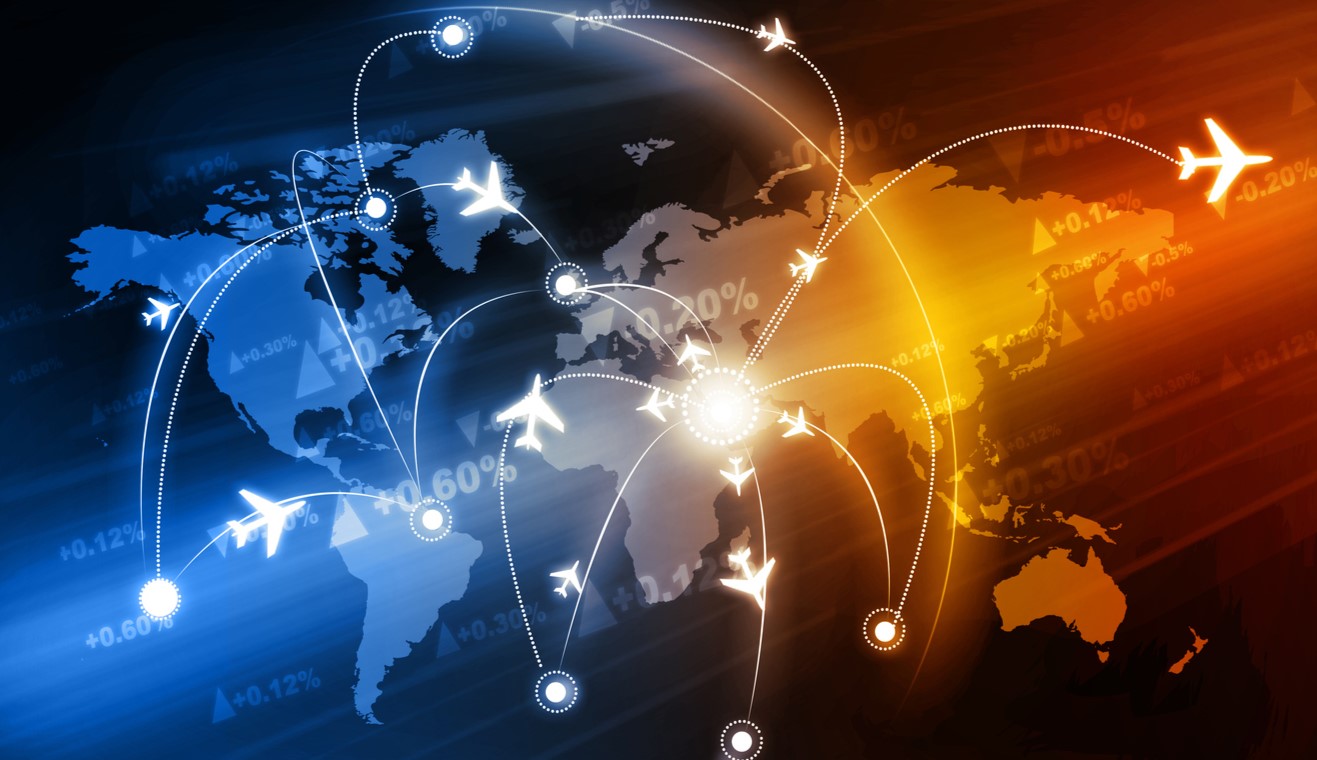
Ever wondered how airlines decide where to fly? Airline network planning is a complex puzzle that involves a mix of data analysis, market research, and strategic thinking. Airlines must consider factors like passenger demand, competition, and airport capacity. They also need to balance profitable routes with those that build their brand or meet regulatory requirements. Understanding these elements can reveal why your favorite airline flies to some destinations but not others. In this post, we'll explore 17 fascinating facts about airline network planning that will give you a peek behind the scenes of the aviation industry. Buckle up and get ready for takeoff!
Key Takeaways:
- Airline network planning involves designing flight routes and schedules to maximize profitability. Factors like passenger demand, operational costs, and regulatory environment influence route selection and network efficiency.
- Modern technology, including data analytics and simulation software, plays a crucial role in airline network planning. Challenges like seasonal variability and geopolitical issues require airlines to adapt and plan for contingencies.
What is Airline Network Planning?
Airline network planning is a complex process that involves designing flight routes, schedules, and frequencies to maximize profitability and efficiency. This intricate task requires balancing passenger demand, operational costs, and competitive dynamics.
-
Route Selection: Airlines meticulously analyze passenger demand, competition, and profitability before selecting new routes. This ensures that each route can sustain itself financially.
-
Hub-and-Spoke Model: Many airlines use a hub-and-spoke system, where flights are routed through central hub airports. This model helps in maximizing connectivity and reducing operational costs.
-
Point-to-Point Model: Low-cost carriers often prefer a point-to-point model, where flights go directly between destinations without a central hub. This reduces travel time and operational complexity.
Factors Influencing Airline Network Planning
Several factors influence how airlines plan their networks. Understanding these can shed light on why certain routes exist and others don't.
-
Passenger Demand: Airlines use historical data and market research to forecast passenger demand. High demand routes are more likely to be profitable.
-
Operational Costs: Fuel prices, airport fees, and labor costs significantly impact route profitability. Airlines must balance these costs against potential revenue.
-
Regulatory Environment: Government regulations, including air traffic rights and safety standards, can affect route planning. Airlines must navigate these rules to operate internationally.
Tools and Technologies in Network Planning
Modern technology plays a crucial role in airline network planning. These tools help airlines make data-driven decisions.
-
Data Analytics: Airlines use advanced data analytics to predict passenger behavior and optimize routes. This helps in making informed decisions.
-
Simulation Software: Simulation tools allow airlines to model different scenarios and assess their impact on the network. This helps in planning for contingencies.
-
Revenue Management Systems: These systems help airlines optimize ticket prices based on demand and competition. This ensures maximum revenue for each flight.
Challenges in Airline Network Planning
Despite advanced tools and data, airline network planning faces several challenges. These obstacles can impact the efficiency and profitability of an airline's network.
-
Seasonal Variability: Passenger demand can vary significantly with seasons. Airlines must adjust their schedules to accommodate these fluctuations.
-
Geopolitical Issues: Political instability and international conflicts can disrupt flight routes. Airlines must be prepared to reroute or cancel flights in such situations.
-
Environmental Concerns: Increasing focus on sustainability and carbon emissions is pushing airlines to adopt greener practices. This can affect route planning and aircraft selection.
The Role of Alliances and Partnerships
Airline alliances and partnerships play a significant role in network planning. These collaborations can enhance connectivity and expand market reach.
-
Code-Sharing Agreements: Airlines often enter into code-sharing agreements, allowing them to sell seats on each other's flights. This expands their network without additional costs.
-
Joint Ventures: Some airlines form joint ventures to share revenue and costs on specific routes. This helps in reducing financial risks and increasing market presence.
-
Global Alliances: Major airlines are part of global alliances like Star Alliance, SkyTeam, and Oneworld. These alliances provide extensive connectivity and shared resources.
Future Trends in Airline Network Planning
The airline industry is constantly evolving, and network planning must adapt to new trends and technologies.
-
Artificial Intelligence: AI is increasingly being used to predict passenger demand and optimize routes. This can lead to more efficient and profitable networks.
-
Sustainable Aviation: With growing environmental concerns, airlines are focusing on sustainable aviation practices. This includes using more fuel-efficient aircraft and exploring alternative fuels.
The Final Approach
Airline network planning is a complex puzzle. It involves balancing demand, costs, regulations, and competition. Airlines must consider hub locations, fleet types, and seasonal trends. They use data analytics and forecasting models to make informed decisions. Passenger preferences and market dynamics play crucial roles too.
Understanding these 17 facts gives you a peek into the intricate world of airline operations. Next time you book a flight, remember the meticulous planning behind it. From choosing routes to scheduling flights, every detail matters. This knowledge not only enhances your travel experience but also highlights the strategic efforts airlines put in to ensure smooth operations.
So, next time you're at the airport, take a moment to appreciate the logistics and planning that make your journey possible. Safe travels!
Frequently Asked Questions
Was this page helpful?
Our commitment to delivering trustworthy and engaging content is at the heart of what we do. Each fact on our site is contributed by real users like you, bringing a wealth of diverse insights and information. To ensure the highest standards of accuracy and reliability, our dedicated editors meticulously review each submission. This process guarantees that the facts we share are not only fascinating but also credible. Trust in our commitment to quality and authenticity as you explore and learn with us.


